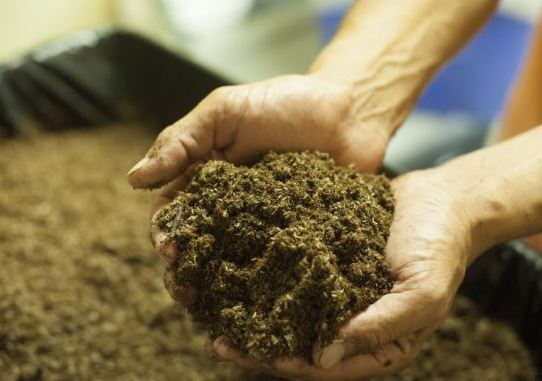Cricket Flour: Questions Answered about Your ‘Gateway Bug’
Posted on April 29, 2015 by insectrecipes No comments

Of all the different types of edible insects out there, crickets are the most commonly eaten. This is true for places like Southeast Asia and Central America, where they can often form a big part of the diet, and in the Western world. For whatever reason, crickets seem to be the ‘gateway bug’ for Americans and Europeans who are interested in seeing what all the fuss is about. For many, the idea of popping a cricket (legs and all) into their mouth irks them. Luckily, quite a few companies are starting to mass produce cricket powder, which looks nothing like the creepy crawly it originates from and makes a great substitute for a variety of food dishes.
How Nutritious Are Crickets?
These light, lean, crunchy creatures don’t exactly give consumers the impression that they have much substance. Many (myself included) are in awe with how incredibly nutritious crickets are. In 100 grams of crickets, you’ll find 121 calories, 12.9 grams of protein, 5.5 g. of fat, 5.1 g. of carbohydrates, 75.8 mg. calcium, 185.3 mg. of phosphorous, 9.5 mg. of iron, 0.36 mg. of thiamin, 1.09 mg. of riboflavin, and 3.10 mg. of niacin.
The flour in particular can be up to 65% protein. When you think about it in terms of price, cricket flour is more expensive than other sources of powdered protein like whey or soy. However, each pound of cricket powder contains considerably more protein than a pound of the alternatives.
Who’s Eating It, and Why Should I?
First and foremost, any person trying to cut down on unhealthy fat in their diet while maintaining quality nutrition should consider cricket powder. Many dieters are already seeing success by using the powder is a leaner substitute in a lot of their crutch foods (Ahem, baked goods).
Cricket powder has also become particularly popular among fans of the Paleo diet, though beware, the crickets you are eating may not have been fed the most natural diet themselves. Most cricket farmers feed them some sort of ‘bug meal.’ Next Millennium Farms are experimenting with more organic diets for their crickets, but it hasn’t entered the mainstream yet.
With what seems to be a ‘Allergy Epidemic’ in the 21st century Western World, cricket flour is also becoming a viable alternative for people who find themselves allergic to a lot of preservatives, additives, and mystery ingredients found in the grocery store sources of protein. This is actually how the co-founder of cricketflours.com founded his Portland-based cricket flour company. People with diabetes or other dietary restrictions might find the powder to be a useful addition to add variety to their diet.
How Do You Make the Flour?
If you want to know about all the magic that happened before that bag o’ bug powder arrived on your doorstop, you’d have to inquire with the individual manufacturer. Most farms have their own unique way of doing things, though you’ll find that most are fairly open door with their skeptical potential consumers.
The owners of cricketflour.com, for example, raise their crickets in enclosures for 4-7 weeks. If they’re trying to breed larger crickets, they wait the full 7. Crickets are cold blooded, so if you slowly lower the temperature in their enclosure, they enter a state of stasis before the temperature is dropped to a lethal level. This might even entice some vegetarians into trying the powder, because the farmers euthanize the crickets in this humane manner. Some other farms choose to use carbon dioxide rather than lowering temperatures, which is still way kinder than how modern farms harvest beef (if you don’t already know about this, you might not want to). After euthanasia, the crickets are cleaned and organized. Then, the farmers remove the moisture by baking, dehydrating or freeze-drying them. Finally, the dried crickets are put in a miller and come out as a fine grain flour.
How Can I Use It?
Cricket flour is a great addition to a protein shake, soup, or a variety of baked goods. You can find a ton of recipes on this site, as well as experiment with some of your own. Do take care however, cricket flour won’t have the same attributes as any other flour. When you experiment, try mixing a portion (30/70) of cricket flour in with your traditional ingredient to see how it turns out. Cricket flour also has a lot of similarities with baking powder, so it might help to reduce the amount of baking powder you normally use in your recipe.




Leave a Reply